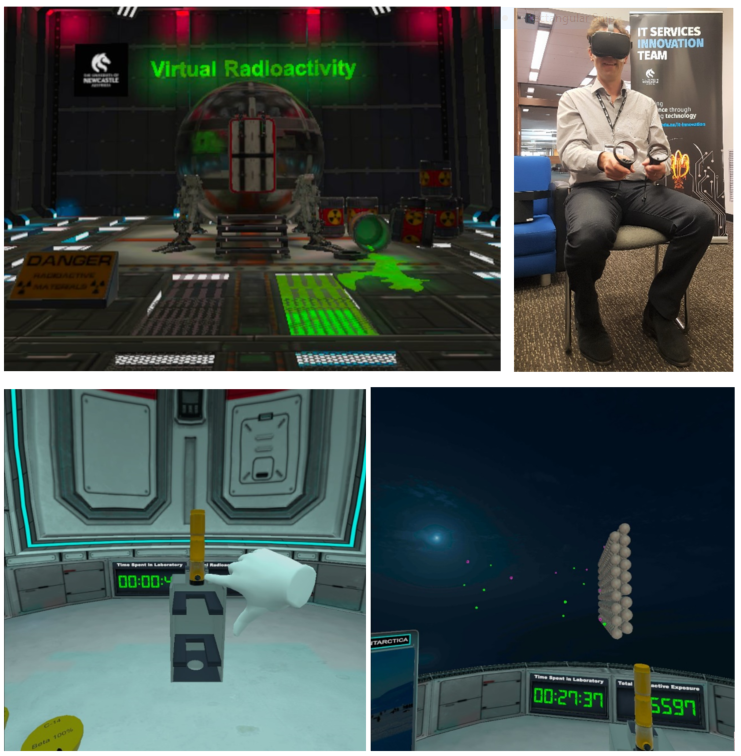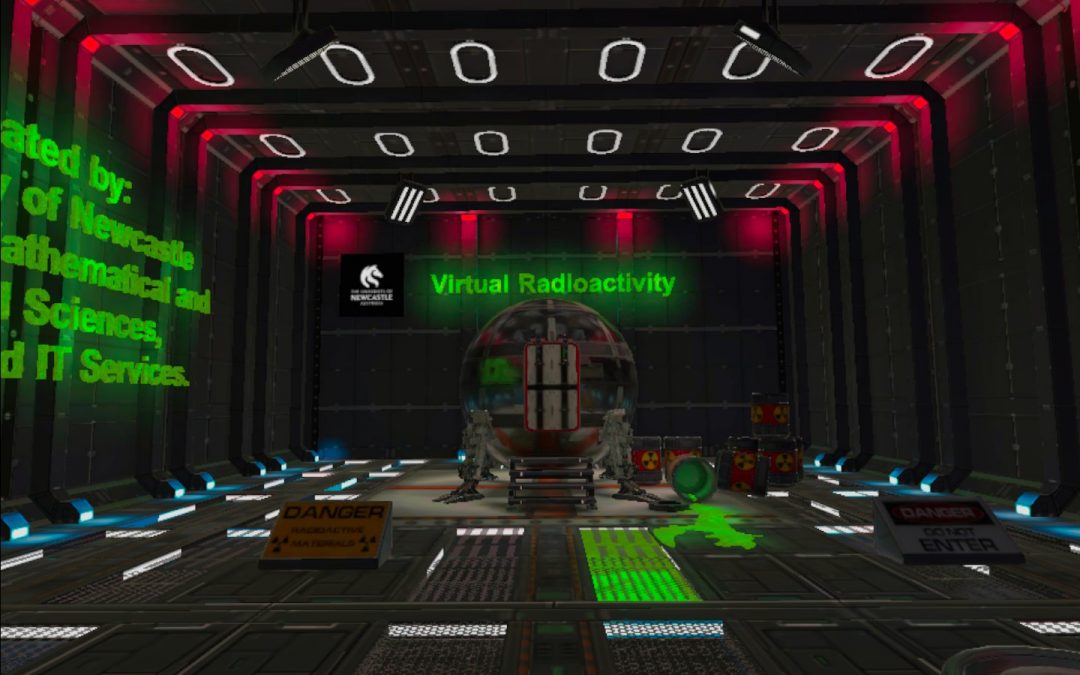The Centre for Advanced Training Systems (ATS) has worked closely with A/Prof. Vicki Keast, Prof. Thomas Nann and a team from the School of Mathematical and Physical Sciences along with the University of Newcastle IT Innovation Team, led by Chief Information Officer Anthony Molinia, to develop a fantastic new virtual reality (VR)-based teaching tool exploring the interaction between radiation and matter. Virtual Radioactivity is now being deployed into University of Newcastle undergraduate labs for the first time, with >160 students using it in the first weeks.
Understanding radiation and the interaction of radiation with matter is a key learning area in first year Physics. This has presented a major challenge for teaching staff within the Physics department. You simply can’t hand students a Geiger counter, lead sheets and a block of radioactive Caesium and let them explore. Instead, training must happen under very well-controlled conditions with small amounts of radioactive substance, limited flexibility in design and long measurement times. While this approach is relatively safe, it is tedious and not very engaging. Even under these conditions, many students are understandably anxious about working with ‘radiation’. Allowing students to freely explore is essentially impossible and working with highly radioactive sources is completely out of the question.
Against this background, the team identified an opportunity to use VR technology to update existing 1st year physics labs about radiation.
Virtual Radioactivity was created to address existing limitations. The new VR-based teaching application lets students experiment with radiation, taking measurements and visualising sub-atomic particles. Students can choose multiple radiation sources, different barriers and interact with the virtual environment around them. When they finish, they can automatically email their experimental measurements. The application is being actively rolled-out into 1st year physics labs with >250 students, and interest in further expanding the application in the future.
Speaking about the project, Head of School Prof. Thomas Nann said, “It was a pleasure working [on the project]. The application is fantastic. I love it. It is great! Really look forward to doing more.” After using the application, one student said “The virtual reality was really interesting! Thanks for the opportunity to try it out.” I can see VR becoming incorporated into medicine and training more and more in the near future.”
Watch a walkthrough video of Virtual Radioactivity here: https://youtu.be/rNNzx0immdI
The content expert team included A/Prof. Vicki Keast, Prof. Thomas Nann, Keith Foggett, Michael Cvetanovski, Andrew Danson, A/Prof. David Pontin, Dr. Lachlan Rogers, Dr. Karen Livesey, Dr. Simon Utteridge and Mark Hopkins. The team applied for the application to be developed through the digital simulation technology evaluation pilot (STEP1) project. The STEP1 project was funded and supported by the Deputy Vice Chancellor-Academic’s (DVC-A) office and lead and executed by the Centre for Advanced Training Systems. Design and development were provided through outstanding support from Vendela Pento, Gaute Rasmussen and John Siestma of the Newcastle ITS Innovation Team.
Learn more about ATS project, including STEP1 on our website: https://www.advancedtrainingsystems.org.au/projects/
Image below (starting top-left; count clockwise): Virtual radioactivity application start scene, virtual radioactivity lab environment, radiation visualisation view and Head of School Prof. Thomas Nann using the application.


